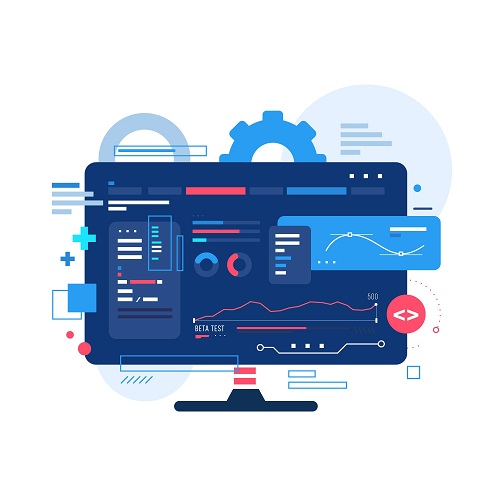
Web design isn’t just about aesthetics; it’s a pivotal component influencing content marketing’s effectiveness. In today’s digital landscape, the symbiotic relationship between web design and content marketing plays a defining role in engaging audiences, optimizing conversions, and enhancing brand visibility.

Introduction
- Defining Web Design
Web design encapsulates the visual and structural elements of a website, encompassing layout, graphics, and user experience to create an engaging interface.
- Overview of Content Marketing
Content marketing involves crafting and disseminating valuable, relevant content to attract and retain a target audience, fostering brand loyalty and conversions.
The Intersection of Web Design and Content Marketing
- How Search Engines Work
A visually captivating website design entices users, prolonging their stay and encouraging interaction with the content. An aesthetically pleasing layout enhances content absorption and encourages sharing.
- SEO and Site Accessibility
Well-structured web design contributes to search engine optimization (SEO), boosting site visibility. Accessibility features ensure inclusivity, catering to a broader audience base.

User Experience and Retention
- Navigation and Readability
Intuitive navigation and readable content improve user experience, reducing bounce rates and fostering longer engagement periods.
- Mobile Responsiveness
In an era dominated by mobile usage, responsive web design is imperative. Seamless adaptation across devices enhances accessibility and user satisfaction.
Conversion Optimization
- Impact on Sales Funnel
Web design influences every stage of the sales funnel, guiding users from awareness to conversion. A streamlined design ensures a smoother journey.
- Call-to-Actions and Design
Strategic placement and design of call-to-actions within the website’s framework significantly impact conversion rates, prompting visitors to take desired actions.
Trends and Innovations
- Adaptive Design and Personalization
Adaptive design tailors the user experience, while personalization elevates engagement, catering to individual preferences.
- Integrating Multimedia Elements
Incorporating multimedia elements like videos and interactive content enhances user engagement and information retention.

Case Studies Highlighting Impact
- Successful Implementations
Examining cases where optimized web design significantly bolstered content marketing strategies offers valuable insights into successful executions.
- Lessons Learned
Analyzing failures or missteps underscores the importance of cohesive web design and content alignment.
Future of Web Design and Content Marketing
- Predictions and Evolving Strategies
Anticipating future trends involves leveraging evolving technologies, emphasizing user-centric experiences, and maximizing content impact.
- Emerging Technologies
The integration of AI, AR/VR, and immersive experiences will redefine web design and content strategies, revolutionizing user engagement.
FAQ's
Yes, web design elements such as site structure, mobile-friendliness, and loading speed directly influence SEO rankings.
User-centric design, intuitive navigation, and readable content enhance user experience, leading to improved retention rates.
While certain principles like accessibility, responsiveness, and visual appeal hold universal value, effective design often requires customization based on the target audience.
While Google holds the lion’s share, SEO strategies also apply to other search engines like Bing, Yahoo, and others.
High-quality content combined with effective design amplifies the overall impact, fostering better engagement and conversions.
Conclusion
In conclusion, the correlation between web design and content marketing is undeniable. A harmonious blend of these elements is essential for a compelling online presence, driving engagement, conversions, and brand loyalty.

